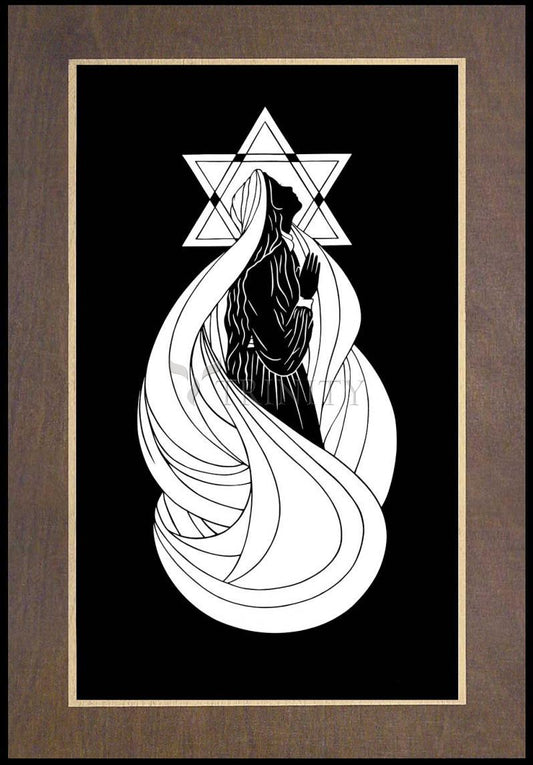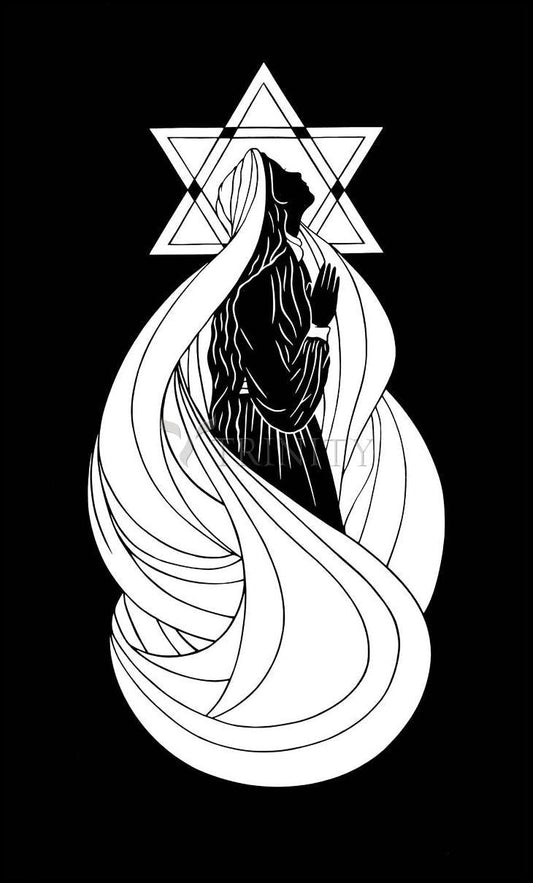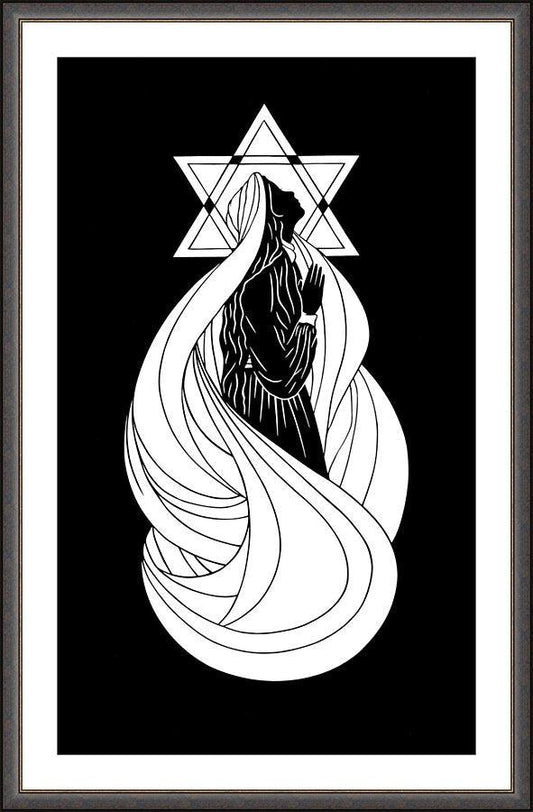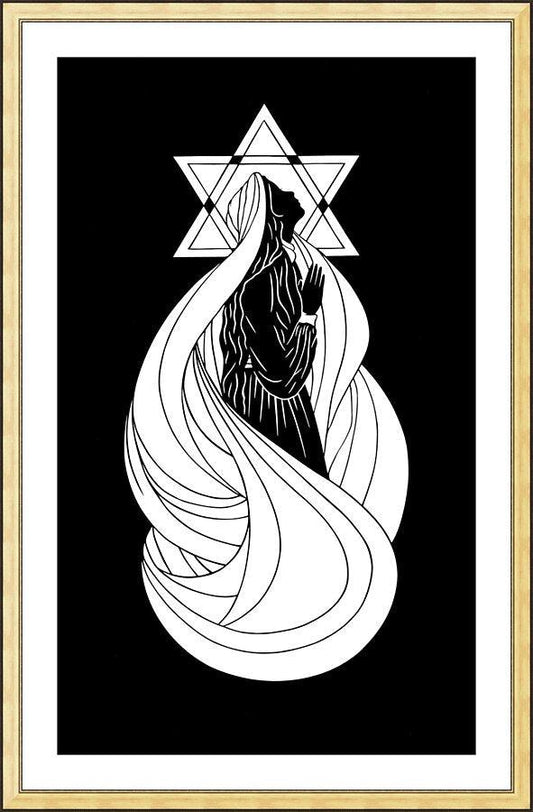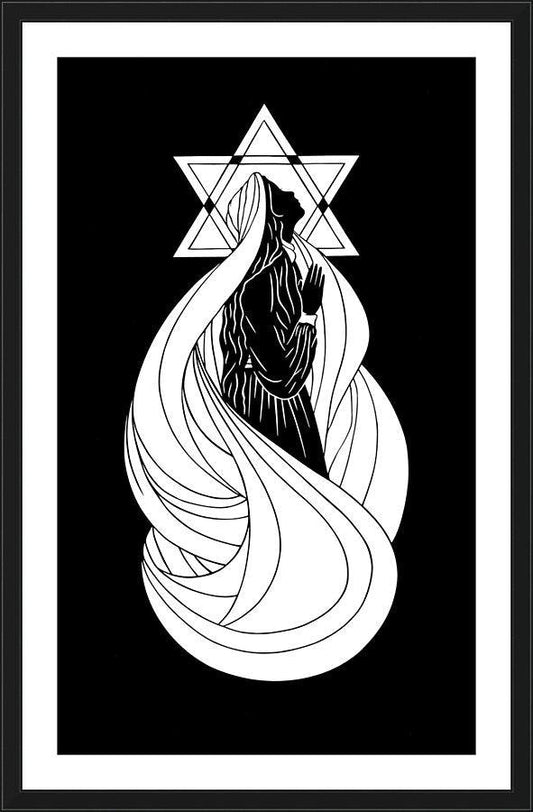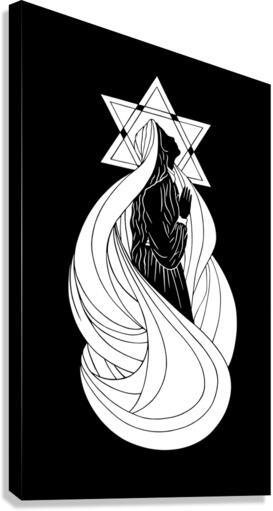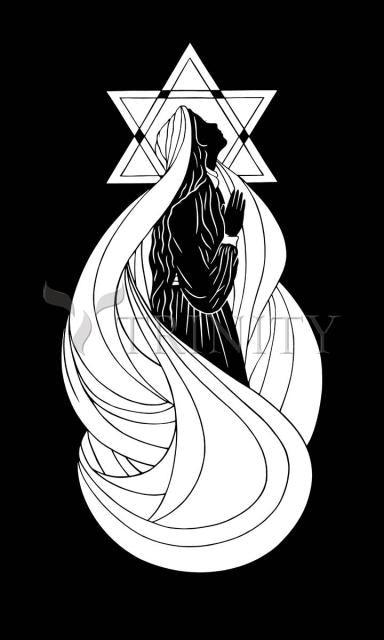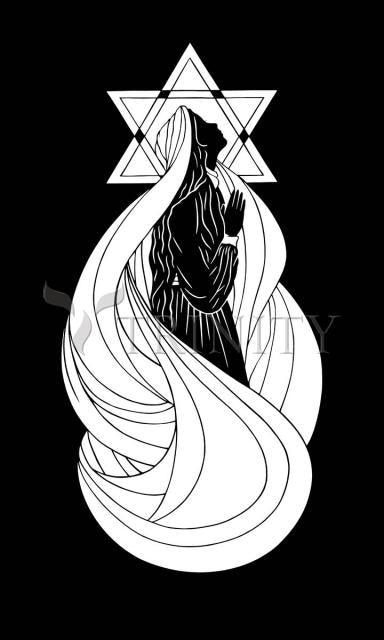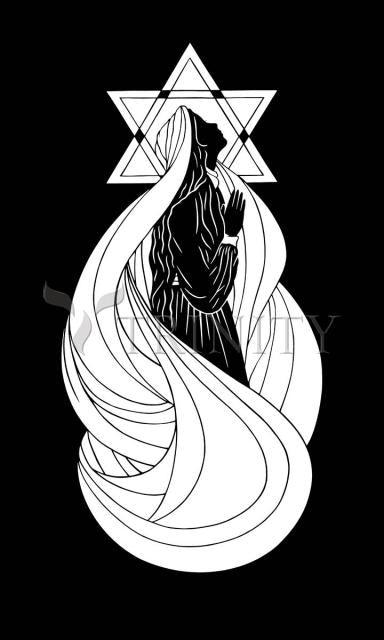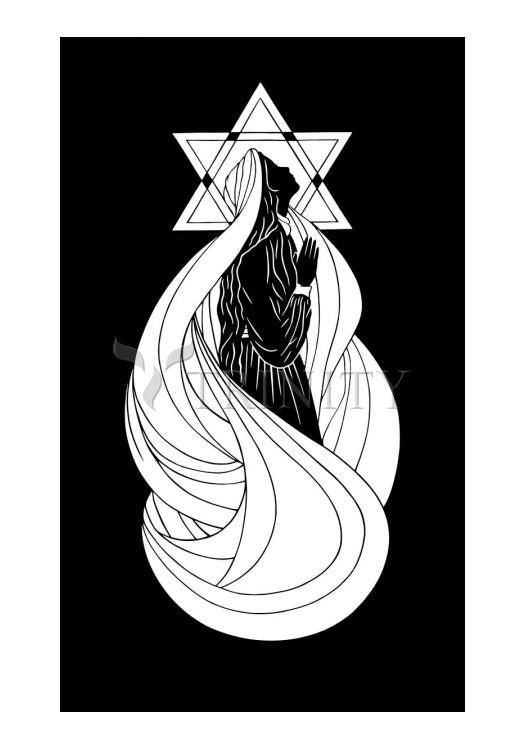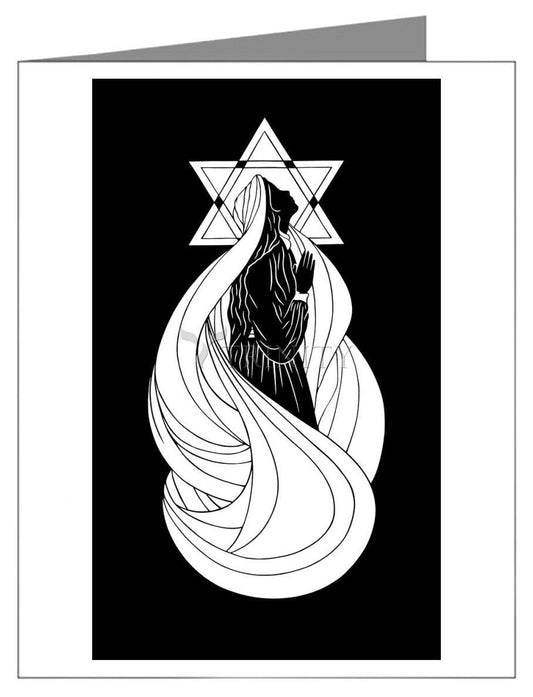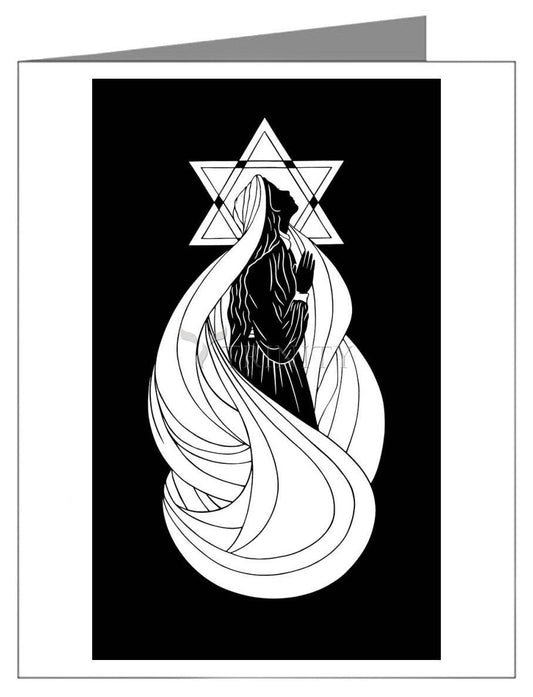The Magen David (shield of David, or as it is more commonly known, the Star of David) is the symbol most commonly associated with Judaism today, but it is actually a relatively new Jewish symbol. It is supposed to represent the shape of King David's shield (or perhaps the emblem on it), but there is really no support for that claim in any early rabbinic literature. In fact, the symbol is so rare in early Jewish literature and artwork that art dealers suspect forgery if they find the symbol in early works.
Scholars such as Franz Rosenzweig have attributed deep theological significance to the symbol. For example, some note that the top triangle strives upward, toward God, while the lower triangle strives downward, toward the real world. Some note that the intertwining makes the triangles inseparable, like the Jewish people. Some say that the three sides represent the three types of Jews: Kohanim, Levites and Israel. While these theories are theologically interesting, they have little basis in historical fact.
The symbol of intertwined equilateral triangles is a common one in the Middle East and North Africa, and is thought to bring good luck. It appears occasionally in early Jewish artwork, but never as an exclusively Jewish symbol. The nearest thing to an "official" Jewish symbol at the time was the menorah.
In the middle ages, Jews often were required to wear badges to identify themselves as Jews, much as they were in Nazi Germany, but these Jewish badges were not always the familiar Magen David. For example, a fifteenth century painting by Nuno Goncalves features a rabbi wearing a six-pointed badge that looks more or less like an asterisk.
In the 17th century, it became a popular practice to put Magen Davids on the outside of synagogues, to identify them as Jewish houses of worship in much the same way that a cross identified a Christian house of worship; however, I have never seen any explanation of why this symbol was chosen, rather than some other symbol.
The Magen David gained popularity as a symbol of Judaism when it was adopted as the emblem of the Zionist movement in 1897, but the symbol continued to be controversial for many years afterward. When the modern state of Israel was founded, there was much debate over whether this symbol should be used on the flag.
Today, the Magen David is a universally recognized symbol of Jewry. It appears on the flag of the state of Israel, and the Israeli equivalent of the Red Cross is known as the Red Magen David.
"Source: Judaism 101
In modern times, the Star of David has become a premier Jewish symbol. This six-pointed star (hexagram), made of two interlocking triangles, can be found on mezuzahs, menorahs, tallis bags, and kipot. Ambulances in Israel bear the sign of the "Red Star of David," and the flag of Israel has a blue Star of David planted squarely in the center.
What is the origin of this six-pointed symbol?
Through the Jewish people's long and often difficult history, we have come to the realization that our only hope is to place our trust in God. The six points of the Star of David symbolize God's rule over the universe in all six directions: north, south, east, west, up and down.
Originally, the Hebrew name Magen David -- literally "Shield of David" -- poetically referred to God. It acknowledges that our military hero, King David, did not win by his own might, but by the support of the Almighty. This is also alluded to in the third blessing after the Haftorah reading on Shabbat: "Blessed are you God, Shield of David."
Various other explanations exist on the meaning behind the Star of David.
One idea is that a six-pointed star receives form and substance from its solid center. This inner core represents the spiritual dimension, surrounded by the six universal directions. (A similar idea applies to Shabbat -- the seventh day which gives balance and perspective to the six weekdays.)
In Kabbalah, the two triangles represent the dichotomies inherent in man: good vs. evil, spiritual vs. physical, etc. The two triangles may also represent the reciprocal relationship between the Jewish people and God. The triangle pointing "up" symbolizes our good deeds which go up to heaven, and then activate a flow of goodness back down to the world, symbolized by the triangle pointing down.
A more practical theory is that during the Bar Kochba rebellion (first century), a new technology was developed for shields using the inherent stability of the triangle. Behind the shield were two interlocking triangles, forming a hexagonal pattern of support points. (Buckminster Fuller showed how strong triangle-based designs are with his geodesics.)
One cynical suggestion is that the Star of David is an appropriate symbol for the internal strife that often afflicts Jewish nation: two triangles pointing in opposite directions!
The Star of David was a sad symbol of the Holocaust, when the Nazis forced Jews to wear an identifying yellow star. Actually, Jews were forced to wear special badges during the Middle Ages, both by Muslim and Christian authorities, and even in Israel under the Ottoman Empire.
So whether it is a blue star waving proudly on a flag, or a gold star adorning a synagogue's entrance, the Star of David stands as a reminder that for the Jewish people... in God we trust.
"Excerpts from Star of David by Rabbi Shraga Simmons



